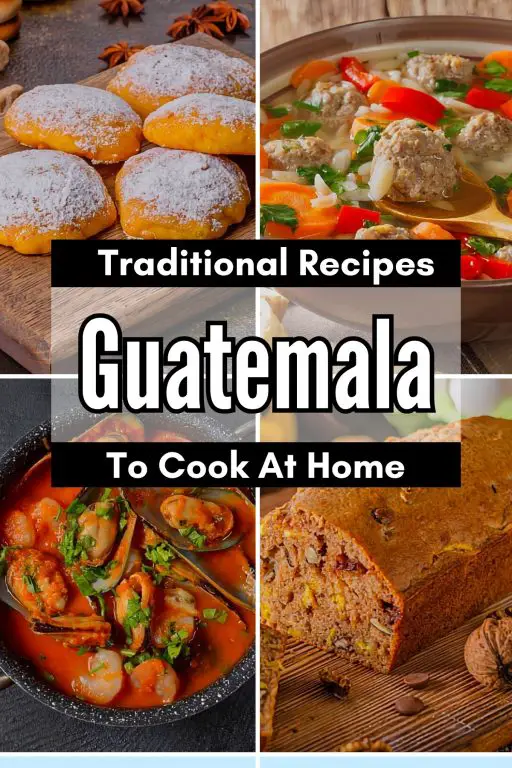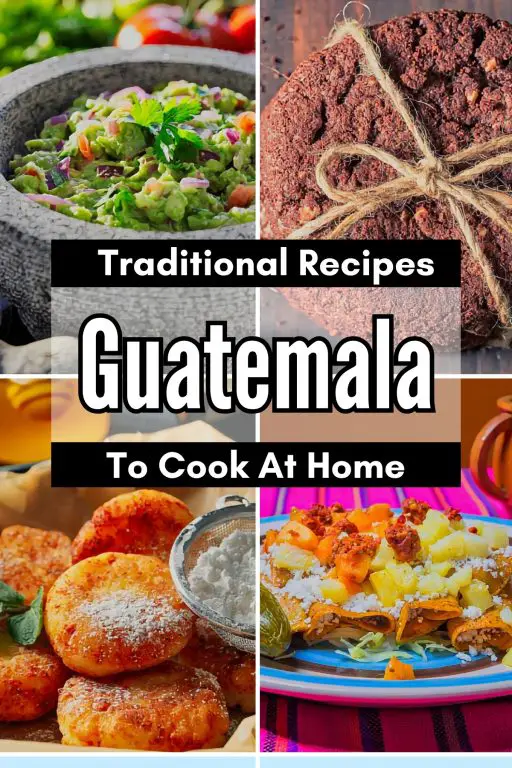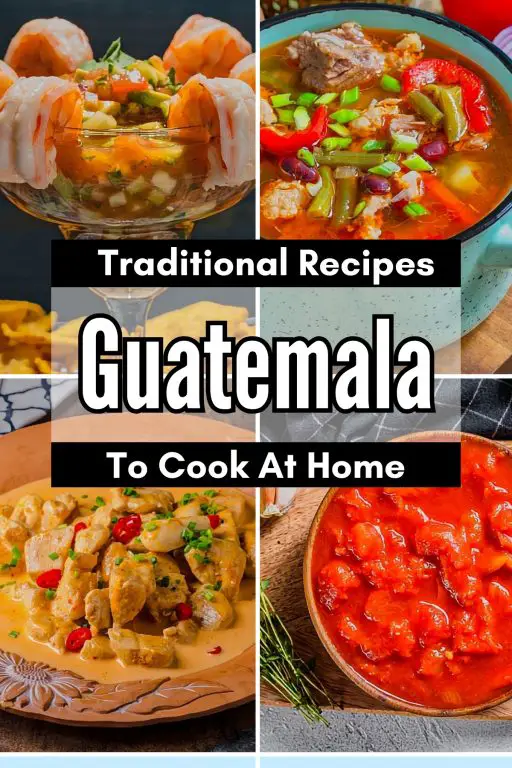I head about the Guatemalan Jocon de Pollo Recipe when I was in San Juan Sacatepequez, Guatemala. I later got to take a cooking class where I learned how to make Jocon de Pollo! It’s a dish that stands out because of its blend of ingredients and is a key part of local cooking. San Juan Sacatepequez is a cool town full of culture and tradition, with awesome landscapes and fun markets all around. When I got there, I saw the cool fabrics and crafts made by the local artists.
The cooking class took place in a small kitchen, where a friendly local chef shared all about traditional Guatemalan dishes. Chicken in a green sauce made with tomatillos, cilantro, green onions, and some spices is the recipe for Guatemalan Jocon de Pollo. I figured out how to mix the ingredients to get the right texture while we made the dish. The steps were simple, and the recipe to make this well-liked dish were really easy to follow.
The first thing that stood out about the Guatemalan Jocon de Pollo was its bright green color and the yummy smell coming from the kitchen. We made the food and then served it with tortillas and rice. Tasting the dish showed a mix of flavors; the chicken was super tender, and the green sauce had a nice kick to it, being just the right amount of spicy. It was a little thick and clung to the chicken pieces.
People in San Juan Sacatepequez love to make Guatemalan Jocon de Pollo for celebrations and fun gatherings. This dish shows up a lot on restaurant menus, which really shows how important it is in the area. While I was in the town, I saw that many families make different versions of the recipe with their own special twists.
It was super fun to check out the local market before the cooking class! I noticed the fresh fruits and vegetables, along with herbs, in the Guatemalan Jocon de Pollo recipe that are sourced from local farms. This link to local ingredients shows just how fresh and good the dish is, making it a favorite for everyone looking for real Guatemalan flavors.
My trip to San Juan Sacatepequez was super cool! I learned a lot of neat cooking techniques in class, and I got to see some really interesting things about the local culture too. The Guatemalan Jocon de Pollo recipe is a yummy meal that shows off the flavors of Guatemalan food. Whether you’re at home or in a restaurant, it’s a classic dish that shows off the local flavors.
Ingredients For the Guatemalan Jocon de Pollo Recipe
Chicken Thighs or Drumsticks
Tomatillos Husked and Washed
Cilantro
Green Bell Peppers Seeded and Chopped
Chopped Large Onion
Minced Garlic Cloves
Chicken Broth
Jalapenos Seeded and Chopped
Ground Achiote or Annatto
All-purpose Flour
Cooking Oil
Salt
Pepper
Cooking Instructions For the Guatemalan Jocon de Pollo Recipe
In a large pot or Dutch oven, heat the oil over medium heat. – Use a deep skillet if you don’t have a pot. Ensure the oil is evenly distributed across the pot. Preheat the pot before adding the oil. Make sure the pot is large enough to accommodate all the ingredients. Be cautious when working with hot oil to avoid splatters. Adjust the heat as needed to prevent the oil from smoking. Use a wooden spoon to stir the ingredients in the pot.
Add the chopped onion and minced garlic to the pot. Sauté until the onion becomes translucent. – Stir the onion and garlic occasionally to prevent burning. Cook until the onion turns soft and golden in color. Ensure the garlic is finely minced for better flavor distribution. Use a medium heat setting to avoid burning the onion and garlic. Keep stirring to evenly cook the onion and garlic. Use a spatula to scrape the bottom of the pot to prevent sticking. Adjust the heat as needed to control the cooking process.
Place the chicken pieces in the pot and cook until they are lightly browned on all sides. – Make sure the chicken pieces are evenly spaced in the pot. Use tongs or a spatula to turn the chicken pieces for even browning. Ensure the chicken pieces are cooked thoroughly before proceeding. Brown the chicken over medium-high heat for a nice color. Be cautious when handling the hot chicken pieces. Check the internal temperature of the chicken for doneness. Remove any excess fat or skin from the chicken pieces if desired.
Meanwhile, in a blender or food processor, combine the tomatillos, cilantro, green bell peppers, and green chilies. Blend until smooth. – Cut the tomatillos into quarters for easier blending. Use fresh and vibrant cilantro leaves for better flavor. Remove the seeds and ribs from the green bell peppers for milder heat. Adjust the amount of green chilies based on desired spiciness. Blend until the mixture has a smooth consistency. Scrape down the sides of the blender or food processor as needed. Taste the sauce and adjust the seasoning if necessary.
Pour the blended mixture into the pot with the chicken. Stir well to combine. – Ensure all the chicken pieces are coated with the sauce. Use a spoon or spatula to evenly distribute the sauce. Stir in a circular motion to incorporate the flavors thoroughly. Scrape the sides and bottom of the pot to prevent sticking. Stir gently to avoid breaking up the chicken pieces. Continue stirring until the sauce and chicken are well combined. Maintain a medium heat setting while stirring.
In a small bowl, mix the ground achiote or annatto seeds with the all-purpose flour. Sprinkle this mixture into the pot and stir well to thicken the sauce. – Ensure the ground achiote or annatto seeds are evenly distributed in the flour. Mix the ground achiote or annatto seeds with the flour until combined. Sprinkle the mixture gradually to avoid clumping. Stir vigorously to prevent lumps and
10 Foods Most Eaten by Guatemalan Locals
1. Pepián – A thick, aromatic stew made with chicken, beef, or pork, cooked in a rich sauce of roasted tomatoes, pumpkin seeds, and chili peppers. Pepián is traditionally served with rice and is one of Guatemala’s most cherished dishes.
2. Kak’ik – This turkey soup is spiced with coriander, chili, and achiote, creating a vibrant red color and bold flavor. A UNESCO-recognized dish, Kak’ik is a classic in Mayan cuisine.
3. Tamales – Guatemalan tamales differ from Mexican versions and are typically larger, wrapped in banana leaves, and come in several varieties like *colorados* (red tamales) or *negros* (sweet tamales).
4. Fiambre – A traditional salad prepared during All Saints’ Day, Fiambre is made with over 50 ingredients, including vegetables, meats, cheeses, and sausages, making it a unique and colorful dish.
5. Hilachas – This stew combines shredded beef with potatoes and vegetables in a tomato-based sauce flavored with spices like cilantro and achiote. Hilachas is typically served with rice or corn tortillas.
6. Chiles Rellenos – Guatemalan stuffed peppers are filled with seasoned ground beef, rice, and vegetables, then battered and fried. They’re often served with tomato sauce and are popular in street food markets.
7. Jocon – A green chicken stew made with tomatillos, green tomatoes, and cilantro, Jocon is a flavorful, mild dish usually served with rice.
8. Garnachas – These small, fried tortillas are topped with minced meat, cabbage, and tomato sauce, offering a quick and tasty snack that’s easy to find in markets.
9. Rellenitos – Sweet plantains stuffed with refried black beans and fried to a golden brown, Rellenitos are a favorite dessert or snack, often topped with sugar.
10. Atol de Elote – A warm, sweet corn drink flavored with cinnamon and sugar, Atol de Elote is popular for breakfast or as an afternoon treat, especially during Guatemala’s rainy season.
5 Essiential Ingredients for Guatemalan Food
Guatemalan cuisine is deeply influenced by Mayan traditions, Spanish heritage, and locally sourced ingredients, resulting in a unique flavor profile that combines earthy, tangy, and spicy notes. Among the essential ingredients, corn stands out as a foundational staple. Known as maíz in Spanish, corn is the backbone of many dishes and a cultural symbol in Guatemala. It is used in various forms, from tortillas that accompany nearly every meal to tamales, which are made with a dough of masa and wrapped in banana leaves. Corn also features in drinks like atol de elote, a warm, sweet corn beverage. This ingredient’s versatility and accessibility make it a crucial part of Guatemalan meals, representing sustenance and tradition.
Chilies are another key ingredient that adds both flavor and heat to Guatemalan food. Though the cuisine is not as intensely spicy as other Central American foods, it often incorporates varieties like the guajillo, cobán, and *pasa* peppers, which add depth without overpowering the dish. These chilies are used in salsas, stews, and sauces, such as the rich sauce in pepian, a traditional meat stew. The use of mild to medium spiciness gives Guatemalan dishes their distinctive warmth and aroma, allowing the natural flavors of other ingredients to shine through.
Tomatoes are essential for the base of many Guatemalan recipes, providing acidity, richness, and natural sweetness. Often roasted to deepen their flavor, tomatoes are combined with chilies, onions, and spices to create rich sauces that are integral to dishes like hilachas (shredded beef stew) and jocon (a green chicken stew). The incorporation of tomatoes reflects Spanish influences while highlighting the country’s abundance of fresh produce.
Another indispensable ingredient is pepitoria, or pumpkin seeds. Ground pumpkin seeds are used to thicken sauces, add texture, and enhance flavors, particularly in stews and traditional dishes. In pepian, for instance, pepitoria gives the sauce a nutty undertone that balances the spices and brings a subtle richness. This ingredient not only adds depth but also reflects Guatemala’s pre-Columbian culinary heritage, as pumpkin seeds have been used in the region for centuries.
Finally, achiote (annatto) brings vibrant color and a mild, peppery flavor to Guatemalan food. The seeds are often ground into a paste or oil and used as a seasoning or natural colorant, giving dishes an appealing reddish hue. Achiote’s subtle flavor enhances recipes like recado rojo, a red sauce for meats and poultry. Together, these five ingredients — corn, chilies, tomatoes, pepitoria, and achiote — embody the flavors, history, and culinary creativity of Guatemalan cuisine, forming the foundation of its most cherished dishes.
FAQ For the Guatemalan Jocon de Pollo Recipe
Q: What are the key ingredients in the Jocon de Pollo recipe?
A: The Jocon de Pollo recipe features chicken as the main protein, typically cooked until tender in a vibrant green sauce. The green sauce is made from tomatillos, cilantro, green onions, and jalapeños, which blend together to create a fresh and tangy flavor profile. Additionally, garlic and spices like cumin may be added to enhance the depth of the dish. The combination of these ingredients results in a hearty and flavorful meal that reflects the traditional flavors of Guatemalan cuisine.
Q: How is the chicken prepared in the Jocon de Pollo recipe?
A: In the Jocon de Pollo recipe, the chicken is usually cooked separately before being combined with the green sauce. The chicken can be boiled or sautéed until fully cooked, allowing it to become tender and absorb the flavors of the sauce. Once cooked, the chicken is added to the blended green sauce, where it simmers to absorb the vibrant flavors. This method ensures that the chicken remains juicy and flavorful while becoming perfectly coated in the rich green sauce.
Q: Can the Jocon de Pollo recipe be made in advance?
A: Yes, the Jocon de Pollo recipe can be made in advance, making it a convenient option for meal preparation or entertaining guests. You can prepare the green sauce and cook the chicken ahead of time, storing them separately in the refrigerator. When you’re ready to serve, simply combine the chicken with the green sauce and reheat until warmed through. This allows the flavors to meld together beautifully and makes for an easy and delicious meal when you have a busy schedule.
Q: What side dishes complement the Jocon de Pollo recipe?
A: The Jocon de Pollo recipe pairs wonderfully with several side dishes that enhance its flavors. Traditional options include rice, which helps soak up the flavorful green sauce, or corn tortillas, perfect for wrapping around the chicken. You might also serve it with a side of black beans for added protein and fiber, or a fresh salad to provide a crunchy contrast. These sides not only complement the dish but also create a well-rounded and satisfying meal.
Q: Is there a vegetarian version of the Jocon de Pollo recipe?
A: While the Jocon de Pollo recipe is traditionally made with chicken, a vegetarian version can easily be created by substituting the chicken with vegetables or plant-based protein. You could use ingredients like zucchini, mushrooms, or even tofu, which can absorb the flavors of the green sauce while providing a hearty texture. By following the same cooking method and using the vibrant green sauce, you can enjoy a delicious and satisfying vegetarian adaptation of this classic Guatemalan dish.

Guatemalan Jocon de Pollo Recipe
Ingredients
- 3 lbs chicken (thighs or drumsticks)
- 1 pound tomatillos husked and washed
- 1 cilantro
- 2 bell peppers green seeded and chopped
- 1 onion large and chopped
- 4 garlic cloves minced
- 4 cups chicken broth
- 2 jalapenos seeded and chopped
- 1 tablespoon achiote ground or annatto seeds
- 2 tablespoons flour all-purpose
- 2 tablespoons oil
- Salt and pepper to taste
Equipment
- Large Dutch oven or heavy-bottomed pot: This will be used to cook the chicken and stew. Make sure it has a lid and is large enough to hold all the ingredients.
- Skillet or frying pan: You will need this to toast and sauté some of the ingredients, such as the spices and vegetables, before adding them to the stew.
- Saucepan: This will be used to cook the tomatillos and other ingredients for the sauce separately before blending them together. It should be large enough to hold the ingredients and allow for blending.
- Stockpot or large pot: You may need a separate pot to cook the rice or any other side dishes you plan to serve with the Jocon de Pollo.
- Optional: Griddle or comal: If you plan to make tortillas from scratch to serve with the stew, you will need a griddle or comal to cook them.
Instructions
- In a large pot or Dutch oven, heat the oil over medium heat.
- a. Use a deep skillet if you don't have a pot.
- b. Ensure the oil is evenly distributed across the pot.
- c. Preheat the pot before adding the oil.
- d. Make sure the pot is large enough to accommodate all the ingredients.
- e. Be cautious when working with hot oil to avoid splatters.
- f. Adjust the heat as needed to prevent the oil from smoking.
- g. Use a wooden spoon to stir the ingredients in the pot.
- a. Stir the onion and garlic occasionally to prevent burning.
- b. Cook until the onion turns soft and golden in color.
- c. Ensure the garlic is finely minced for better flavor distribution.
- d. Use a medium heat setting to avoid burning the onion and garlic.
- e. Keep stirring to evenly cook the onion and garlic.
- f. Use a spatula to scrape the bottom of the pot to prevent sticking.
- g. Adjust the heat as needed to control the cooking process.
- a. Make sure the chicken pieces are evenly spaced in the pot.
- b. Use tongs or a spatula to turn the chicken pieces for even browning.
- c. Ensure the chicken pieces are cooked thoroughly before proceeding.
- d. Brown the chicken over medium-high heat for a nice color.
- e. Be cautious when handling the hot chicken pieces.
- f. Check the internal temperature of the chicken for doneness.
- g. Remove any excess fat or skin from the chicken pieces if desired.
- a. Cut the tomatillos into quarters for easier blending.
- b. Use fresh and vibrant cilantro leaves for better flavor.
- c. Remove the seeds and ribs from the green bell peppers for milder heat.
- d. Adjust the amount of green chilies based on desired spiciness.
- e. Blend until the mixture has a smooth consistency.
- f. Scrape down the sides of the blender or food processor as needed.
- g. Taste the sauce and adjust the seasoning if necessary.
- a. Ensure all the chicken pieces are coated with the sauce.
- b. Use a spoon or spatula to evenly distribute the sauce.
- c. Stir in a circular motion to incorporate the flavors thoroughly.
- d. Scrape the sides and bottom of the pot to prevent sticking.
- e. Stir gently to avoid breaking up the chicken pieces.
- f. Continue stirring until the sauce and chicken are well combined.
- g. Maintain a medium heat setting while stirring.
- a. Ensure the ground achiote or annatto seeds are evenly distributed in the flour.
- b. Mix the ground achiote or annatto seeds with the flour until combined.
- c. Sprinkle the mixture gradually to avoid clumping.
- d. Stir vigorously to prevent lumps and





4 comments
The sauce was zesty and really elevated the chicken in this dish.
I cant believe they didnt mention the secret ingredient for the Jocon de Pollo recipe! Its like leaving out the best part of the dish. Do you think they did it on purpose to keep us guessing?
I cant believe they didnt mention the secret ingredient for the Guatemalan Jocon de Pollo recipe! Its like leaving out the best part of the dish. What a tease!
I cant believe they didnt include the secret ingredient for the Jocon de Pollo recipe! And who knew that Guatemalans loved eating so much radish and chayote? Mind blown!